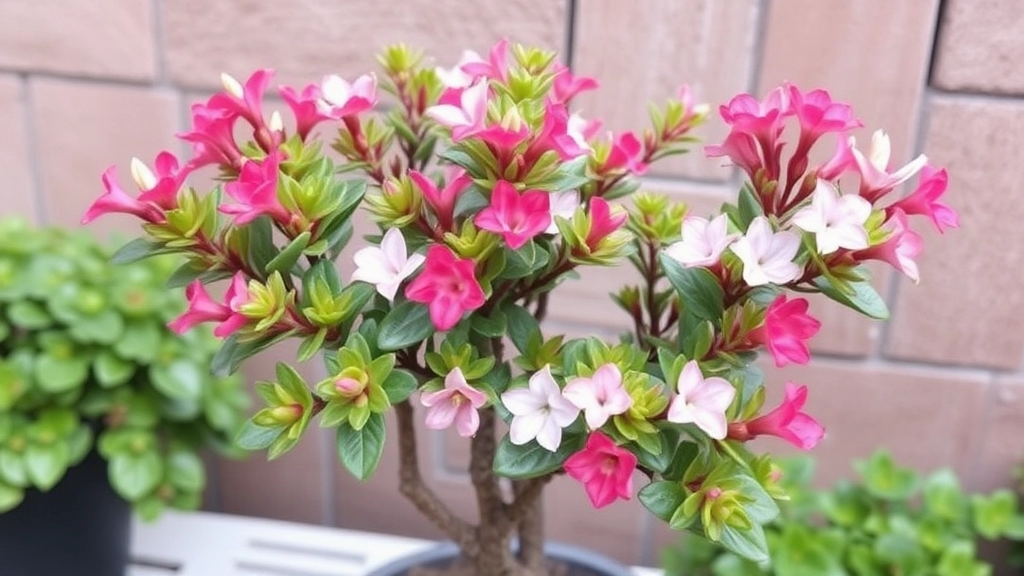Kalanchoe Beharensis: A Unique Addition to Your Plant Collection
If you’re looking to add a unique and eye-catching plant to your collection, the Kalanchoe Beharensis tree is a fantastic choice. This stunning succulent, native to Madagascar, features velvety leaves and can reach impressive heights, making it a standout in any garden or indoor space.
Essential Care Tips for Your Kalanchoe Beharensis
To ensure your Kalanchoe Beharensis thrives, it’s essential to understand its specific needs. From optimal sunlight and watering tips to dealing with common pests, this guide will cover everything you need to know to keep your plant healthy and vibrant.
Optimal Growing Conditions for Kalanchoe Beharensis
Are you struggling to cultivate a thriving Kalanchoe Beharensis?
Understanding the optimal growing conditions is crucial for nurturing this unique succulent.
Kalanchoe Beharensis, also known as the “Chandelier Plant,” flourishes in specific environments that mimic its native habitat.
Light Requirements
– **Bright, Indirect Light**: Place your Kalanchoe Beharensis in a location where it receives bright but indirect sunlight. Direct sunlight can scorch its leaves.
– **Supplemental Lighting**: If you live in a particularly cloudy area, consider using grow lights to ensure your plant gets enough light.
Temperature Preferences
– **Ideal Range**: This plant thrives in temperatures between 20°C to 30°C (68°F to 86°F).
– **Avoid Frost**: Kalanchoe Beharensis is sensitive to cold and should be protected from frost.
Humidity and Airflow
– **Moderate Humidity**: Kalanchoe Beharensis prefers moderate humidity levels. Too much moisture can lead to rot.
– **Good Air Circulation**: Ensure good airflow around the plant to prevent fungal infections.
For more detailed care tips, you might find the [Kalanchoe Tomentosa Watering Best Practices](https://planthq.org/kalanchoe-tomentosa-watering-best-practices-tips/) helpful. Additionally, understanding the [Ideal Temperature for Kalanchoe Blossfeldiana Growth](https://planthq.org/ideal-temperature-for-kalanchoe-blossfeldiana-growth/) can provide further insights into maintaining the right conditions for your Kalanchoe Beharensis.
Sunlight and Temperature Requirements for Kalanchoe Beharensis
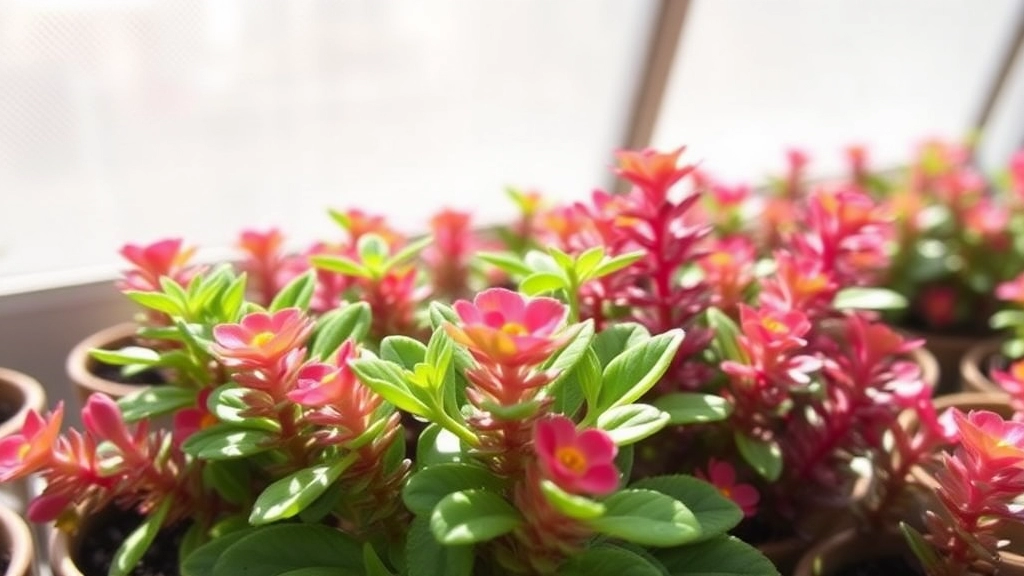
So, you’ve got your Kalanchoe Beharensis and you’re wondering how to keep it thriving, right?
Let’s dive into the sunlight and temperature needs that’ll make your plant feel right at home.
Sunlight Needs
Kalanchoe Beharensis loves the sun!
Here’s what you need to know:
- Bright Indirect Light: It thrives in bright, indirect sunlight. Direct sun can scorch those lovely leaves.
- Adjust Gradually: If you’re moving it from a low-light area to a sunnier spot, do it gradually to avoid shock.
- Indoor Placement: A south or west-facing window is perfect. Just make sure it’s not getting blasted by harsh afternoon rays.
Temperature Preferences
When it comes to temperature, Kalanchoe Beharensis has some specific cravings:
- Ideal Range: It prefers temperatures between 18°C to 24°C (65°F to 75°F).
- Avoid Cold Drafts: Keep it away from chilly drafts or sudden temperature changes. It doesn’t like being cold!
- Winter Care: In winter, it’s best to keep it indoors if you live in a cooler climate. Frost is a no-go for this succulent.
Quick Tips
- Check the Leaves: If the leaves start to look droopy or discoloured, it might be a sign it’s not getting enough light or is too cold.
- Rotation: Rotate your plant occasionally to ensure even growth on all sides.
Soil and Watering Tips for Healthy Growth
After understanding the sunlight and temperature needs of Kalanchoe Beharensis, let’s delve into the essential soil and watering tips that will ensure your plant thrives.
Choosing the Right Soil
Kalanchoe Beharensis flourishes in well-draining soil. Here’s what you should consider:
- Cactus or Succulent Mix: Opt for a commercial cactus mix, which provides excellent drainage. You can find more detailed care tips in our best soil for Kalanchoe Blossfeldiana care tips.
- Additives: You can enhance drainage by mixing in perlite or coarse sand.
- pH Level: Aim for a slightly acidic to neutral pH (around 6.0 to 7.0) for optimal nutrient absorption.
Watering Wisely
Watering is crucial for the health of your Kalanchoe Beharensis. Here are some straightforward tips:
- Frequency: Water only when the top inch of soil feels dry. This could mean every 2-3 weeks during the growing season and even less in winter. For more detailed watering practices, check out our guide on Kalanchoe Tomentosa watering best practices.
- Technique: Water thoroughly until it drains from the bottom. Ensure the pot has drainage holes to prevent root rot.
- Signs of Overwatering: Yellowing leaves or a mushy stem indicate too much water. Adjust your watering schedule accordingly.
Seasonal Adjustments
Keep in mind that your watering habits may need to change with the seasons:
- Spring and Summer: Increase watering frequency as the plant grows actively.
- Autumn and Winter: Cut back on watering as the plant enters dormancy.
Common Pests and How to Deal with Them
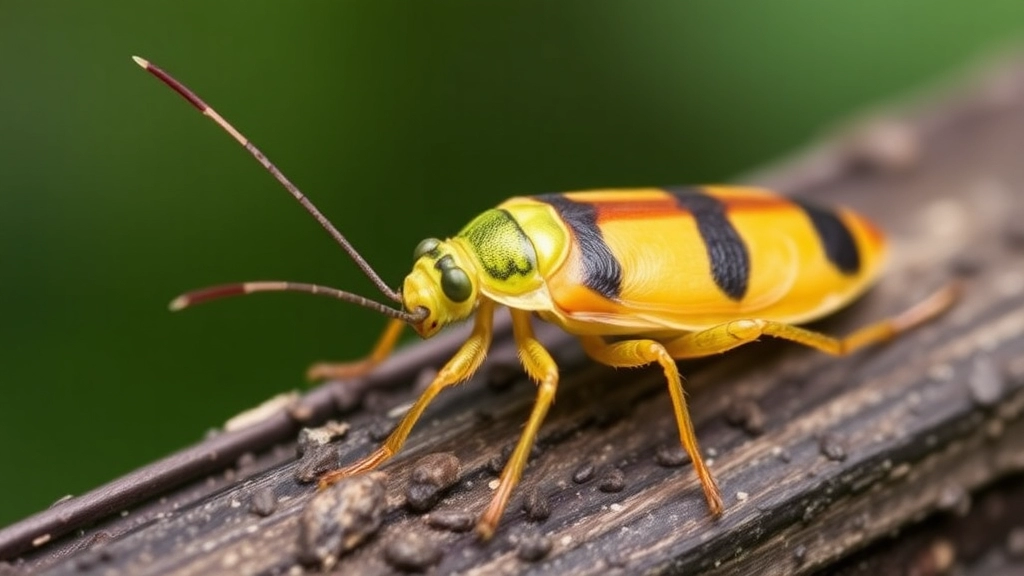
As you nurture your Kalanchoe Beharensis, it’s essential to remain vigilant against common pests that can disrupt its healthy growth. You may find yourself asking, “What pests should I watch out for, and how can I effectively manage them?”
Common Pests
- Aphids
- Small, soft-bodied insects that suck sap from the leaves.
- They can cause leaf curling and yellowing.
- Mealybugs
- White, cotton-like pests that cling to the stems and leaves.
- They often leave a sticky residue known as honeydew.
- Spider Mites
- Tiny, spider-like creatures that thrive in dry conditions.
- They create fine webbing and can cause leaf discoloration.
- Scale Insects
- Hard, shell-like pests that attach to stems and leaves.
- They can weaken the plant by sucking its sap.
How to Deal with Pests
- Regular Inspection
- Check your plant weekly for any signs of infestation.
- Natural Remedies
- Use insecticidal soap or neem oil to treat minor infestations.
- A mixture of water and dish soap can also be effective.
- Manual Removal
- For larger pests like mealybugs, gently wipe them off with a cotton swab dipped in alcohol.
- Isolation
- If you spot an infestation, isolate the affected plant to prevent the spread to others.
- Maintain Humidity
- Increasing humidity can deter spider mites, as they thrive in dry conditions.
As we explore the journey of nurturing Kalanchoe Beharensis, understanding propagation techniques is essential for expanding your plant collection or sharing with friends.
One of the most popular methods for propagating Kalanchoe Beharensis is through cuttings. It’s straightforward and rewarding. For a comprehensive guide on this method, you might find the [step-by-step guide on how to propagate Kalanchoe Tomentosa](https://planthq.org/how-to-propagate-kalanchoe-tomentosa-stepbystep-guide/) quite useful.
Kalanchoe Beharensis often produces offsets, or “pups,” which can be easily separated and replanted. For more detailed tips on caring for these offsets, check out the [complete guide to Kalanchoe Pinnata air plant care](https://planthq.org/complete-guide-to-kalanchoe-pinnata-air-plant-care/).
Each propagation method has its charms, and experimenting with them can be a delightful experience.
VI. Pruning and Maintenance Tips for Kalanchoe Beharensis
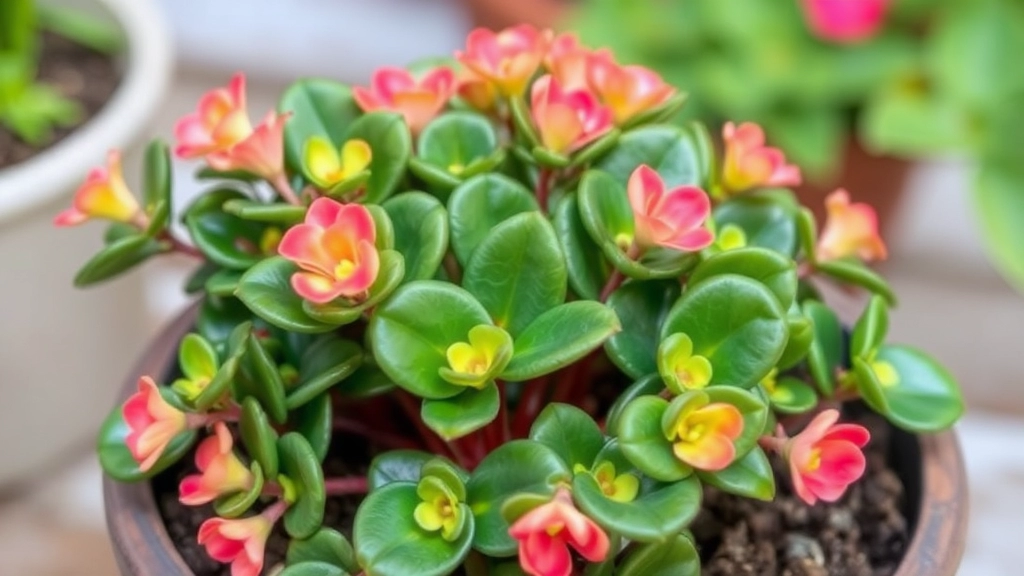
So, you’ve got your Kalanchoe Beharensis thriving, and now you’re wondering how to keep it looking its best. Pruning and maintenance are key to ensuring your plant stays healthy and vibrant.
Why Prune?
Pruning isn’t just about aesthetics; it encourages new growth and helps manage the plant’s size. Plus, it can prevent diseases by improving air circulation.
When to Prune:
- Spring: This is the ideal time to give your Kalanchoe a good trim. It’s waking up from dormancy and ready to grow.
- After Flowering: If your plant blooms, give it a light prune afterward to help it focus on new leaves.
How to Prune:
- Use clean, sharp scissors: This reduces the risk of disease.
- Cut just above a leaf node: This encourages new growth from that point.
- Remove dead or yellowing leaves: This keeps your plant looking fresh and healthy.
Maintenance Tips:
- Dust the leaves: Wipe them down with a damp cloth to keep them clean and photosynthesizing effectively.
- Check for pests: Regularly inspect your plant for signs of pests like mealybugs or aphids. Catching these early makes them easier to manage.
- Rotate your plant: Every few weeks, turn your Kalanchoe to ensure even sunlight exposure.
Fertilizing:
- Use a balanced, diluted fertilizer during the growing season (spring and summer).
- Cut back on feeding in the fall and winter when the plant is dormant.
Seasonal Care and Dormancy Considerations
As we transition from one season to another, understanding the seasonal care requirements for Kalanchoe Beharensis becomes essential for its health and vitality.
Seasonal Changes
Kalanchoe Beharensis, like many succulents, experiences distinct growth phases throughout the year.
- Spring to Summer: This is the active growing season.
- Increase watering as temperatures rise.
- Ensure it receives plenty of bright, indirect sunlight.
- Fertilisation can be beneficial; a diluted, balanced fertiliser works wonders.
- Autumn: As temperatures cool, it’s time to adjust care.
- Gradually reduce watering to prevent root rot.
- Monitor for any signs of pests as conditions change.
- Winter: This is the dormancy period for Kalanchoe Beharensis.
- Water sparingly; the plant requires minimal moisture.
- Keep it in a warm spot with bright light, avoiding cold drafts.
- Fertilisation should be halted until spring.
Key Considerations
- Temperature: Ideal temperatures range from 18°C to 24°C.
- Protect from frost during winter months.
- Lighting: During dormancy, bright, indirect sunlight is crucial.
- Too little light can lead to leggy growth. For more details on lighting, visit our guide on fixing etiolated Kalanchoe Blossfeldiana.
- Watering: Always check the soil moisture before watering.
- The top inch should be dry before you add more water. For a comprehensive watering guide, see our article on Kalanchoe Tomentosa watering best practices.
Toxicity and Safety Precautions
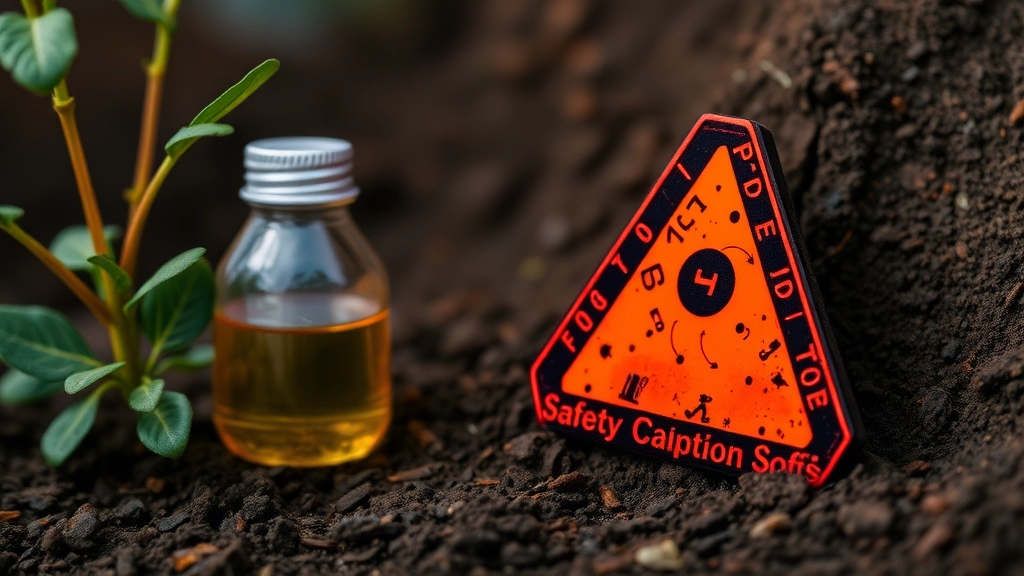
So, you’ve got your Kalanchoe Beharensis thriving, and everything seems perfect. But have you thought about its toxicity? It’s a valid concern, especially if you have pets or small children around.
Is Kalanchoe Beharensis Toxic?
Yes, it is. Kalanchoe Beharensis contains compounds that can be harmful if ingested. Here’s what you need to know:
- Symptoms of Toxicity: If consumed, it may cause vomiting, diarrhea, or more severe reactions in pets and humans.
- Pets at Risk: Cats and dogs are particularly vulnerable. If they munch on a leaf or two, it could lead to some serious health issues.
- Children’s Safety: Keep this plant out of reach of little hands. Kids are naturally curious, and we want to avoid any accidents.
Safety Tips:
- Placement: Position your Kalanchoe Beharensis high up or in a room that’s off-limits for pets and kids.
- Educate: Teach your family about the plant. Awareness is key!
- First Aid: If ingestion occurs, contact a vet or doctor immediately. Better safe than sorry!
Keeping these safety tips in mind will help you enjoy your plant without worry.
As we explore the fascinating world of Kalanchoe Beharensis, you might wonder about the different varieties and hybrids that exist.
Kalanchoe Beharensis, commonly known as the “Chandelier Plant,” is not just a single species; it boasts several captivating varieties and hybrids that enhance its appeal.
### Notable Varieties
– **Kalanchoe Beharensis ‘Fang’**
– Characterized by its unique, jagged leaves that resemble fangs.
– Grows taller than the standard variety, making it an eye-catching addition to any collection.
– **Kalanchoe Beharensis ‘Mother of Thousands’**
– Features smaller leaves and produces offsets prolifically.
– Ideal for those looking to propagate easily.
– **Kalanchoe Beharensis ‘Silver’**
– Distinguished by its silvery-grey foliage.
– Adds a striking contrast to other plants in a mixed arrangement.
### Hybrid Species
Kalanchoe hybrids often emerge from crossbreeding with other Kalanchoe species, leading to diverse characteristics:
– **Kalanchoe ‘Kalandiva’**
– A hybrid known for its compact size and vibrant flowers.
– Perfect for smaller spaces or indoor gardening.
– **Kalanchoe ‘Pink Butterflies’**
– Features delicate pink blooms and a bushy growth habit.
– A delightful choice for adding colour to your home.
### Why Choose Varieties and Hybrids?
– **Diverse Aesthetics**: Different varieties offer unique leaf shapes, sizes, and colours, allowing for creative arrangements.
– **Adaptability**: Some hybrids are bred for specific conditions, making them easier to care for in various environments.
– **Propagation Potential**: Varieties like ‘Mother of Thousands’ can easily multiply, providing ample opportunities to expand your collection. For more detailed tips on propagation, check out our [step-by-step propagation guide](https://planthq.org/kalanchoe-tomentosa-propagation-guide-stepbystep-tips/).
Additionally, if you are interested in the care specifics for one of the popular hybrids, you can refer to our [ultimate guide to Kalanchoe Blossfeldiana hybrid care](https://planthq.org/ultimate-guide-to-kalanchoe-blossfeldiana-hybrid-care/).
FAQs on Kalanchoe Beharensis Tree
What kind of sunlight does Kalanchoe Beharensis need?
Kalanchoe Beharensis thrives in bright, indirect sunlight. Direct sun can scorch its leaves, so it’s best to place it near a south or west-facing window where it can get ample light without the harsh afternoon rays.
What is the ideal temperature range for Kalanchoe Beharensis?
The ideal temperature range for Kalanchoe Beharensis is between 18°C to 24°C (65°F to 75°F). It should be kept away from cold drafts and sudden temperature changes, especially during winter.
How can I tell if my Kalanchoe Beharensis is getting enough light?
If the leaves of your Kalanchoe Beharensis start looking droopy or discolored, it might be a sign that it’s not getting enough light. Also, rotating your plant occasionally can ensure even growth on all sides.
What are the common pests that affect Kalanchoe Beharensis?
Common pests include aphids, mealybugs, spider mites, and scale insects. Regular inspection and using natural remedies like insecticidal soap or neem oil can help manage these pests effectively.
When is the best time to prune Kalanchoe Beharensis?
The best time to prune Kalanchoe Beharensis is in the spring or after it has finished flowering. Pruning during these times encourages new growth and helps manage the plant’s size.
How should I prune my Kalanchoe Beharensis?
Use clean, sharp scissors to cut just above a leaf node. Removing dead or yellowing leaves will keep the plant healthy. Regular dusting and inspection for pests are also essential maintenance tasks.
Is Kalanchoe Beharensis toxic?
Yes, Kalanchoe Beharensis is toxic if ingested. It can cause symptoms like vomiting and diarrhea in pets and humans. Cats and dogs are particularly vulnerable, so it’s crucial to keep the plant out of their reach.
What safety precautions should I take with Kalanchoe Beharensis?
Place the plant in a location that is inaccessible to pets and children. Educate your family about the plant’s toxicity, and have a plan for immediate action if ingestion occurs, such as contacting a vet or doctor.
References
-
How to Grow Kalanchoe Beharensis Indoors
-
Kalanchoe Beharensis Care
-
Kalanchoe Beharensis – Houseplants Expert
